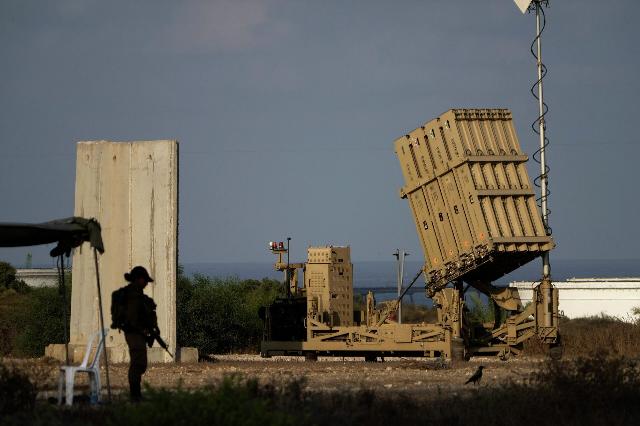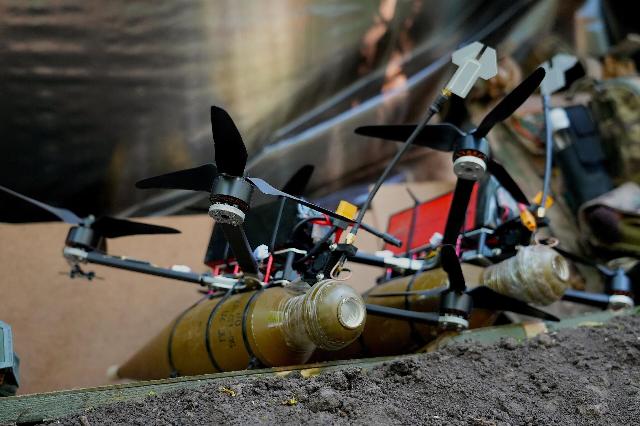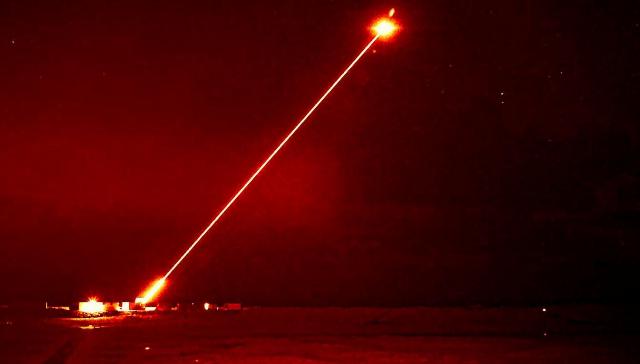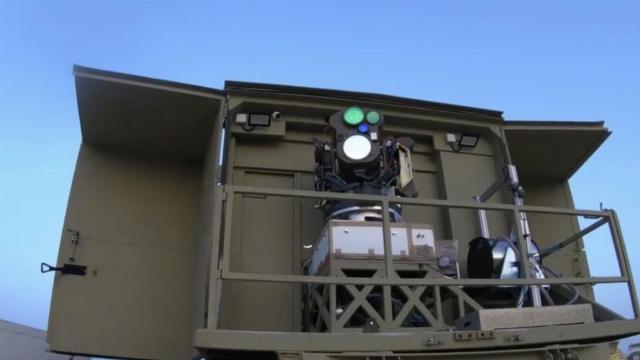Historian of air defense Knutov: Drones will soon cease to play an important role in combat.
MOSCOW, June 5 — RIA Novosti, Zakhar Andreev. This event has been expected for a long time, and finally it happened — the laser was successfully used in combat for the first time. Israeli security forces and defense specialists reported on the success. Whether the new type of weapon will be able to effectively cope with the deadliest threat of our time, drones, is discussed in the RIA Novosti article.
"A tremendous success"
The Israel Defense Forces (IDF), the Israeli Air Force (IAF) and defense contractor Rafael in a joint statement announced the combat use of the Iron Beam laser system (Iron Beam in English or Magen Or in Hebrew).
A video of an airplane—type drone flying with a burning wing, apparently set on fire by the same laser, has been posted on Rafael's social media.
"The State of Israel was the first in the world to demonstrate large—scale operational capabilities of laser interception," said Daniel Gold, head of the Directorate of Defense Research and Development, whose organization participated in the creation of the Iron Ray. According to him, it was possible to achieve "tremendous technological and operational success."
Cheaper by 20 thousand times
The report does not provide any technical details. However, it is known that the Iron Beam system fires a laser with a power of 100-150 kW, which is capable of intercepting missiles, drones and shells, including mortars.
The installation is placed on a wheeled platform. Gold also clarified that the Israel Defense Forces plans to deploy similar types of laser systems on aircraft and warships.

Israel's Iron Dome missile defense system in Ashkelon
Image source: © AP Photo / Ariel Schalit
According to numerous testimonies, the Israeli Iron Dome missile defense system is quite reliable, although even it cannot repel all attacks. However, the economics of war are not in her favor: massive attacks by relatively inexpensive attack drones threaten a shortage of high-tech Tamir anti-missiles.
And the Iron Beam can hit multiple targets at significantly lower cost. According to the latest data, one shot of the Iron Beam costs about $2.5. For comparison, the Tamir interceptor missile costs 50 thousand.
Cons and pitfalls
However, laser weapons have a number of significant limitations.
"Indeed, lasers are one of the promising means of combating unmanned aerial vehicles," notes Denis Fedutinov, editor of the Unmanned Aviation publication. "But there are also disadvantages: high energy consumption, as well as a significant impact of weather conditions — precipitation, fog, dust — on the efficiency of the system."
In addition, the range of action is relatively small. "We can only shoot down with a laser what we see," Israel Defense Forces Brigadier General Yaniv Rotem said earlier in an interview with The Times of Israel.

Testing of American anti-submarine laser weapons in the Gulf of Aden
Image Source: © AP Photo / Mass Communication Specialist 2nd Class Devin Kates/U.S. Marine Corps
Considering this, the Iron Beam is considered as an addition to the Iron Dome and other kinetic systems, and not as their replacement, points out the American military expert Thomas Newdick.
"Laser weapons are still in their infancy. This is not a panacea for all air defense problems, but it will obviously occupy its niche," he writes .
Laser and FPV
If the Israelis have clearly demonstrated the effectiveness of lasers against relatively slow aircraft-type UAVs, then the ability to shoot down nimble small FPV drones is questionable.
"Hitting a drone with a laser beam does not happen instantly. If the drone freezes, for example, in search of targets or flies without sudden maneuvers, then the laser will cope. However, FPV drones are capable of highly dynamic flights," says Fedutinov.

FPV drones
Image source: © RIA Novosti / Maria Marikyan
Many modern laser systems are controlled by a joystick, and with it it is difficult to keep the beam on a maneuverable object long enough to hit it, adds Yuri Knutov, a historian of the air defense forces. However, there is such a technology: the system captures the target with a probing beam, which accompanies it despite all movements, and only then a live charge is released. But so far, this is only the case for Americans who have developed this technology to combat ballistic missiles.
Not just lasers
In any case, there are few alternatives to the laser, for all its disadvantages. Drones are adapting to electronic warfare, says Fudutinov. Manual systems quickly lose their ability to counteract new copter models.
"As for kinetic weapons, shotguns are doing well now. A drone falling into a cloud of damaging elements is highly likely to be disabled," says the expert.

A soldier monitors the possible appearance of FPV drones during the combat operation of the Msta-S self-propelled artillery installation in the area of its
Image source: © RIA Novosti / Stanislav Krasilnikov
Knutov considers electromagnetic guns promising. "This is a powerful device that emits a strong electromagnetic signal that burns out electronics. All microchips turn into garbage. This way you can completely neutralize a swarm of drones at a distance of several hundred meters. China has similar devices. The United States is already testing them in the military," he explains.
Not only Israel
Other countries are also developing their own systems. In the spring of 2024, the United Kingdom announced the successful testing of long-range laser weapons. The Dragonfire installation at the training ground hit different types of drones and mortar shells. The price of one shot is up to ten pounds (about $ 13 at the current exchange rate).
The United States has taken up a quantum laser, which is expected to circumvent the limitations of conventional analogues, such as dependence on the weather.

Testing of the British long-range laser weapon Dragonfire
Image source: © Photo : @dstlmod/X
China has repeatedly demonstrated laser air defense systems at exhibitions. In particular, we are talking about installing Silent Hunter. This is a 30-kilowatt low-altitude protection System (LASS) that can be mounted on a truck.
There are such projects in Russia too. And Ukraine showed a prototype of the Trident combat laser a month ago. They claim that it is capable of destroying almost any aerial target, from airplanes to shells, at a distance of up to three kilometers. And ten kilometers away, the beam allegedly blinds airplanes, cruise missiles and drones. However, according to the Ukrainian experts themselves, the development is still "crude". Nothing is known about the use of the system in combat.
Drone time is running out
Despite all the difficulties, lasers are considered very promising, so in the coming years, defense specialists from around the world will try to bring this technology to mind.
According to Knutov, the data accumulation process is underway now, and the result should be expected in three to five years. Then the upgraded installations will be able to fight not only single drones, but also whole swarms.
"If this task is solved, drones will cease to dominate the battlefield," says the historian.
This means that we will have to create fundamentally new weapons.

